By Gordon Plowman (MHG)
Henry Wilfrid Walker, who liked to sign his name as H. Wilfrid Walker, FRGS (Eng.), always wore his badge as a Fellow of the Royal Geographical Society with great honour and esteem. He had well and truly earned this entitlement through his years of world travel and his significant contributions to the natural sciences. He was made a Fellow of the Royal Geographical Society in 1905 whilst resident at Torquay in South Devon.
Wilfrid Walker had an uncanny ability to sniff out the unusual and to take advantage of any opportunity which came his way. After exploring some of the most difficult and dangerous countries in the world, he found and purchased a highly productive citrus orchard known as The Limit at the little-known hamlet of Flaxton on the Blackall Range, west of Nambour. Isolated by poor roads and with very few modern facilities, Flaxton farmers struggled to keep their agricultural businesses viable. Into this small community of between 25 and 30 farms and at least one sawmill, came this quite exceptional man.
Walker’s presence in Flaxton began in 1923 when he bought The Limit from Captain R.S. Shaw. Captain Shaw needed to sell, so the advertisement said, so he could return to India. The advertisement mentioned a new residence with unparalleled views, 21 acres of scrub soil, 600 citrus trees and 4 acres of bearing bananas; price low; easy terms.
Wilf Walker’s family hailed from Averham, Nottinghamshire, where his father, Rev. Joseph Walker served as rector of the historic St Michaels and All Angels church from 1856 until his death in 1907. His son, Rev. Joseph Cyril Walker then took over and remained as rector until 1942. Between father and son, they served a combined 86 years as rectors.
Rev. Joseph Cyril Walker achieved a degree of acclaim when, in 1913, he designed and built a small theatre on the Averham church grounds. Known as the Robin Hood Theatre, it has enjoyed associations with some world-famous actors and personalities and, after a number of setbacks, is still hosting performances today.
Unlike his brother, H. Wilfrid Walker, had no intention of remaining in Averham or even in England. He set about travelling the world. Before coming to Flaxton, Walker had already earned a reputation as a world traveller, explorer and adventurer. The late nineteenth century was an age of exploration and discovery and Wilfrid Walker was part of it. On his travels through 50 different countries, he went on numerous expeditions to study and collect birds, butterflies and insects. He is reputed to have amassed one of the world’s finest collections of birds and insects, all accurately described and immaculately presented. However, some of his adventures brought him into contact with natives of many lands some of whom were extremely hostile. On several occasions his party had to flee from danger and were sometimes lucky to survive.
Walker wrote highly descriptive diaries which he sent back to his folks in England. These sometimes exciting but never boring documents were later assembled into a book which one press report described as a ‘weighty volume.’ The book, “Wanderings Among South Sea Savages and in Borneo and The Philippines,” was published by Witherby and Co. on London in 1908. Note that the terminology he used was in common usage at the time of writing and was not considered derogatory or racist as may be the case today. The book, part natural science and part adventure is fascinating and easy to read but it is not for the squeamish. It contains descriptions of almost unthinkable cannibal violence and the basest imaginable human cruelty. There are stories of head-hunters who proudly display the heads of those they have slaughtered, sometimes members of their own families, as proof of their warrior prowess. Stories repugnant to us today were part of normal life amongst the wild Papuans and others.
Mr. Walker’s book preserves in both the written word and through 48 outstanding photographs, the history of long forgotten peoples and the birds, insects, flowers and trees once prevalent in these foreign lands. Reprinted in 1935 and again in 2013, it is accessible free as a Project Gutenberg eBook. The 48 outstanding photographs take us back to a different time to countries now changed forever; a glimpse into the almost forgotten past. His book contains a dedication to his brother, Charles:
“To my brother Charles. This record of my wanderings in which he took deep interest, is affectionately dedicated.”
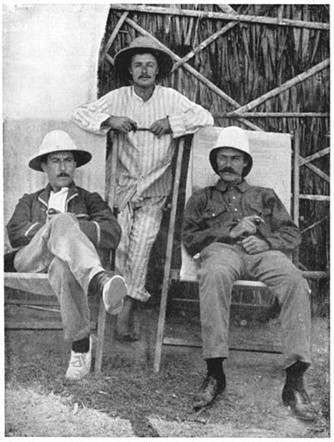
| H.W. Walker (left), and fellow expeditioners – L. Dyke Acland and C.A.W. Monckton |
Walker also wrote stories of his experiences in Sarawak where he stayed for a time with Charles Hose, FRGS, a researcher of natural history and ethnology and whose collection of plants and animals is housed in the British Museum in Cambridge.
C.A.W. Monckton in the photograph, a New Zealander, set out as a prospector and pearler and, later became a very controversial magistrate in Papua. He wrote several books including, “Last Days in New Guinea.”
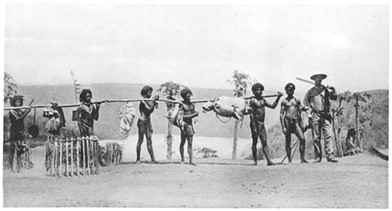
Wilfrid Walker starting off on an expedition
Whilst in the Philippines, Walker met the then Governor General, William Taft who went on to become President of The United States from 1909 until 1913.
Walker tells of his brief association with the legendary, Colonel Percy Fawcett, appointed by the Royal Geographical Society to explore and chart the then unknown wilds of Bolivia. After commanding many successful expeditions, he marched once more into the jungles of Bolivia never to be seen again.
The British press and newspapers throughout the British Commonwealth obviously found, “Wanderings Amongst South Sea Savages and in Borneo and the Philippines,” as fascinating as did its many readers. Snippets from his book began appearing regularly in newspapers, especially Walker’s mention of bird’s nests from the Gomanton caves which the local population used as an ingredient to make soup.
On another of his expeditions he mentions a gliding lizard. These small lizards are equipped with a membrane folded close to their body. By spreading the membrane, the creature can glide from tree to tree. One British newspaper thought this to be a figment of Walker’s imagination and they said so. But time vindicated him. The lizard, found in South East Asia, later became known as draco sumatranus.
Walker spent some years in the U.S.A. and in several South American countries, some of which he wrote about. He grew citrus in California and we already know he met with the legendary Colonel Fawcett. What is probably less well known is his love for the game of cricket. In 1898, the Los Angeles Herald names H. Wilfrid Walker as the secretary-treasurer of Los Angeles Cricket Club, his address being, 2316 West Tenth Street. In 1899, he is picked in the Los Angeles team to play against a San Francisco eleven.
In 1902, Walker had an article titled, “Life Among Samoan Natives,” printed in the Sunday Herald, Los Angeles. He certainly managed to get about, and this at a time when motor transport was in its infancy and air travel almost unheard of.
When Walker came to Flaxton and saw The Limit, he became immediately captivated by the views from this range-top property. Also, having grown citrus in California years earlier, he immediately recognised the potential of this small but productive farm. He and his wife, Edith Mary Walker, moved there in January, 1923. He went to work, further developing the orchard using some of the principles he had learned in California. He planted more bananas and established a pineapple plantation. As a naturalist and self-proclaimed botanist, he planted a beautiful garden of trees, ferns and a variety of native species near his house.
Walker’s association with other natural history researchers and collectors encouraged him to keep writing. We can imagine him at The Limit with fountain pen and blotting paper, perched up at his desk and staring out through the windows at the glorious panorama to the east, ready to begin his story. Or, sitting outside in the shade among the trees he had planted to landscape his dwelling, dreaming up a letter to the editor of some newspaper. Not that he would have had much time to himself. Between tending his fruit trees, bananas and pineapples, he welcomed a seemingly endless stream of visitors who came to speak with the esteemed world traveller or to experience the glorious views from The Limit.
Among his many distinguished visitors, Dr. Earle Page GCMG, leader of the Country Party from 1921 until 1939, and Prime Minister of Australia for 19 days after the death of Joseph Lyons, called in on the Walkers. To have a politician of this calibre come to Flaxton would have been quite a coup.
Over the years when the Walkers occupied The Limit, a stream of other politicians and well-known public figures journeyed to The Limit. Flaxton, never before or since, has played host to so many distinguished people. Foremost among these visitors was Sir Leslie Wilson, who served as Governor of Queensland from 1932 to 1946. He visited in June, 1933.
The Imperial Press Delegation came to The Limit in September 1925. During the late 19th. and the early 20th. centuries, Britain, Canada, Australia, New Zealand and South Africa were increasingly drawn together by the imperial press system. These were the times when the British Empire spanned the globe and there were many who supported its colonial ambitions. The controversial Imperial Press became the focus of debate for the most challenging issues of the day.
The Empire Press also visited and acclaimed the spectacular views. The Empire Press Union, now known as the Commonwealth Press Union, aimed to uphold the ideals and values of the Commonwealth.
The list of esteemed individuals and organisations goes on but the Walkers also welcomed visitors from all walks of life, irrespective of status. Some came just to enjoy the views, farmers came to see the orchard and to attend the agricultural field days held there, and friends simply popped in to catch up.
Wilf Walker’s wife, Edith, joined the Flaxton Country Women’s Association as one of their foundation members and remained an active member for the next few years. Both she and Wilf had a close association with St. Mary’s Church of England in Montville and on at least two occasions, judged the flower competition at the annual fete. Their presence at St. Marys is not surprising given Wilf’s father’s background as rector at Averham in England.
Interestingly, The Royal Institute of British Architects have amongst their collections a house design for H. Wilfrid Walker at Averham, Nottinghamshire, dated 1913. This suggests that Walker was more than capable of designing the renovations he wanted to create his Californian bungalow.
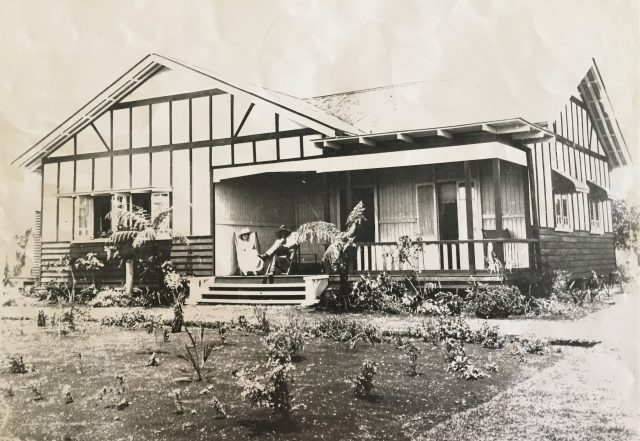
| Edith and Wilf Walker on the front porch of their Californian bungalow, The Limit (ca mid 1920s) |
In 1925, The Limit was again advertised for sale. It obviously did not change hands because the Walkers were back there in 1926 and stayed for the next 13 years. The wording of the ad describes The Limit as it was then. It is interesting to note from the following extract, the suggested possible uses for the property:
The Limit, Flaxton, containing 24 acres with first class Californian Bungalow, fully furnished with best of furniture (new and costly), man’s cottage (3 rooms), large packing shed and workmen’s quarters.
Over 600 Citrus Trees, just in prime, best sorts, 6 acres pineapples (heavy crop), 7 1/2 acres Bananas in picked position and just coming into bunch. Full working plant.
Views from property unexcelled in whole of Australia. Property almost surrounded by roads. Suitable for Sanatorium, School or Retired Western workmen’s quarters.
Owner must leave for California on business and so offers this rare opportunity. Genuine buyers motored to inspect. Write for further particulars to the sole agent for the property – T.H. Brown, Commission Agent, Montville.
The wonderful views confronting everyone who looked eastwards from The Limit, enjoyed a period of promotion when, in 1929, Emily Bulcock wrote a newspaper article titled, “The Garden of Queensland.” Emily would later be awarded an O.B.E. for her services to literature and was, for a time, acclaimed as Queensland’s leading poet. The following somewhat lyrical extracts from her article, shows why The Limit became so popular as a ‘must-do’ tourist visit:
But I would award the blue-ribbon title of ‘The Garden of Australia’ to that marvellous plateau, 1300 to 1600 feet high, on the summit of the Blackall Range. Here the holdings are smaller, and the variety of scenery greater. Such a perfect blending of scrub land – rich with wealth of fern and staghorn and palm – of mountain ranges, and sparkling sea, blue as the housewife’s washing day blue tub! And at near view the eastern slopes, covered with bananas waving their green banners; and elsewhere the steep hills carpeted with paspalum and Rhodes grass. As far as the eye reaches are orange orchards and picturesque homes, and the ribbon of red road along the front of the range from Montville to Mapleton, always in sight of the sea.
….The most arresting and spectacular view in this lovely district is the outlook from the orchard of Mr. H.W. Walker, ‘The Limit,’ Flaxton. This lies between Montville and Mapleton – the latter a beautiful mountain village surrounded by orchards and connected with Nambour by tramway. The owner enthusiastically claims that this is the most beautiful spot in Australia. Being a man who spent years in travel, having seen the wonderful views of the Indian Himalayas, the Swiss Alps, the canyons of America, the magnificent scenery of New Guinea, one listens with interest when he adds that it would not be too much to describe ‘The Limit’ as the most beautiful spot in the world.
….. From this wonderful point of vantage, the delighted spectator gazes on a panorama which is marvellously satisfying, because almost every type of scenery mingles. Forest and scrub; miles of orange orchards stretching out on either side; the red road which runs from Montville to Mapleton; range upon range of encircling mountains; dairy farms with fat cattle knee-deep in paspalum and Rhodes grass; plain lands through which the silver ribbons of the Maroochy and Mooloolah rivers thread their way to the sea; picturesque homes nestling amidst scented orange groves or overlooking the precipitous slopes, banana clad, which face seaward.
These extracts illustrate the Flaxton of old and The Limit in its heyday. But, for all its magnificent scenery, the generally prosperous farming community had to face up to a number of difficult problems, not the least of which was the appalling state of the road between Flaxton and Montville.
Most of Flaxton’s fruit went to market via Mapleton where it was loaded on to a two-foot gauge tram and taken to Nambour. Here, it had to be loaded on to the main-line train for transport to Brisbane. Double handling and freight charges proved costly. Savings in freight could be made by sending produce directly via Montville to the rail terminal at Palmwoods but poor road conditions precluded this possibility. A report by the Flaxton Fruit growers and Progress Association made this point:
For years past it has been known that a considerable saving could be affected by sending our produce via Palmwoods instead of via Nambour, but owing to the bad road between here and Montville no serious effort was made to utilise the Palmwoods route until last year, when the association induced the council to metal several of the worst portions of the road, local growers assisting with labour to the value of approximately £100. On last year’s figures, by carting to Palmwoods the actual savings in getting our product to the railway would exceed £300 and it is obvious that the value of the work put in on the road was amply repaid. The carrier has agreed to rebate a portion of the freight to the association the same being spent in improving the road.
These were times when neither governments nor local authorities could be relied upon to do the work generally expected of them. The solution, do it yourselves!
Poor roads were only one of many problems faced by farmers and orchardists. Following heavy losses of banana plants through disease, insect and caterpillar attack, Wilfrid Walker advocated the growing of rubber. Here are some extracts from a lengthy article he wrote:
These days when one hears of banana plantations going out of cultivation through various causes, poor prices, bunchy top, leaf spot and more especially beetle borer, one looks around trying to think of something payable to plant on these neglected banana lands.
….. there is a rubber I am confident would do well, and should be given a trial on the played-out or abandoned banana properties in Southern Queensland. I refer to Castiloa elastica, a native of Southern Mexico and Central America, which I have tapped in its native forests.
….. When I was in Southern Mexico in 1900 several Americans were starting to plant Castiola. This was in the isthmus of Tehuantepec when I was wandering over six months in the vast forests there. I again visited the isthmus eight years later and was amazed at the growth of the industry, but since that time revolutions and bandits have forced the planters to clear out and abandon their properties, which, however, would still be of great value, even though overgrown with jungle.
….. This native of Mexico should flourish as easily here as the pine or the bean tree.
Few, if any, acted on Mr. Walker’s suggestion.
Walker, always an optimist, decided to reply to a letter from a newspaper correspondent signing himself, “Cudgeree.” Walker’s letter gives us an idea of his outlook for fruit growers on the Blackall Range and is reproduced here in full:
Sir, – In Cudgeree’s letter re the fruit fly I was sorry to read his remark that tragedy follows the effort to grow fruit along the North Coast. If he had seen more of the world, I am sure that he would find that such a remark was uncalled for, and is a gross injustice to one of the most glorious districts in the world. And I speak from a very wide experience. I grew citrus fruits in Southern California 36 years ago but heavy frosts generally destroyed most of my crop. Yet today the fruit growers there are doing well, in spite of frosts and often a shortage of water for irrigating. I grew cocoa in Trinidad (British West Indies). But cocoa also had its troubles, and, to add to them, malaria forced me to sell out. During my travels of 25 years, in over 50 different countries, in every part of the world, as a naturalist, explorer and botanist I have stayed with planters of tea, coffee, cocoa, rubber of various kinds, sugar, gambier, pepper, bananas, copra and all kinds of fruits, and I have never failed yet met pessimists such as “Cudgeree” in every one of these industries. It often seemed a mystery to me why any of these commodities were grown at all. I remember only too well the case of a man in California who possessed a fine peach orchard 15 years old. But one year he received only five dollars a ton for his crop which did not pay for the picking, so he stubbed them all up and planted young citrus trees which were frozen the first year. The year following peaches bought 60 dollars a ton, and my friend planted young peach trees again. The moral is not hard to seek.
With all my experience of many countries I have chosen Queensland as the best country to settle in, and the Blackall range, on the North Coast, as the brightest spot for fruit, climate and scenery in this wonderful State which has a glorious future before it. Anyhow, I am satisfied and so are my neighbours. We find that the fruit fly has not caused us to lose much sleep and we market our citrus, pines and bananas in spite of it. I believe that something will be done ere long to stamp out this pest. I have seen worse pests successfully fought in other countries. Frost in California is a serious menace, and yet the burning of oil smudges has to a great degree counteracted that trouble. But give me the Blackall Range for fruit in preference to any spot in California. “Cudgeree” should not lose heart. I am, sir, H. Wilfrid Walker, F.R.G.S. (England).
Wilfrid Walker’s orchard at The Limit soon became the envy of the district. The Nambour Chronicle had this to say:
At Flaxton Mr. H.W. Walker has a particularly well-grown grove of the main orange varieties, the trees being grown in the manner adopted by growers in the Southern States. Most of the trees are well furnished with fruiting wood down to the ground, and in normal seasons they yield very heavy crops of high-quality fruit. This is one of the finest orchards in the district and the fine, healthy, glossy appearance of the foliage of a number of trees that have received liberal dressings of farmyard manure show clearly the benefits of the treatment they have received.
Following a period of below average rainfall, most citrus growers in and near Flaxton experienced light crops of poor-quality fruit. Mr. Walker, on the other hand, managed this difficult period with success. A newspaper article, “Dry Farming. Effect on Citrus Crop,” explained some of the methods he used to counter the prolonged dry period:
A visit paid to The Limit, an orchard owned by H.W. Walker of Flaxton, enabled contrasts to be made with other citrus properties on the Blackall Range, many of which suffered this year on account of the unfavourable seasonal conditions.
Mr. Walker had the experience of growing citrus in California and his methods for dry farming include the frequent turning over of the soil to enable air and any moisture present to penetrate the soil. This resulted in an abundant crop of first-class fruit from his orchard.
Mr. Walker said other orchardists could use his method to improve cropping and relieve stress on the trees.
Older residents of Flaxton remember the beautiful orange orchard, once the pride and joy of The Limit, glistening green in the bright sunlight. Row upon row of trees stood like an assembled army and populated the gradually sloping hillsides leading from the Flaxton to Mapleton road and up to the homestead. No one could ever forget the wonderful, sweet fragrance of orange blossoms decorating every tree in showers of white, or the sight of ripening oranges, beautiful sun-kissed orbs hanging from every fruiting branch. Pupils of the Flaxton school remember The Limit’s packing shed which stood just across the road. Those who visited the house enjoyed the spectacular view looking out over the coastal farmlands and on to the Pacific Ocean. They would also remember the garden Mr. Walker created from shady trees, shrubs, palms and ferns.
In Mr. Walker’s time, large patches of dense scrub country still dotted the mainly cleared and cultivated lands of Flaxton. Within these untouched natural precincts grew the trees, plants, ferns orchids and vines just as they had done for thousands of years past. These cool, dark places provided food and refuge for the permanent wildlife and bird species. At certain times of year when fruits and berries ripened, huge flocks of pigeons flew in to feast upon their favourite foods. Mouth-watering pigeon fricassee or ‘pigeon pot the lot,’ awaited the friends and families of those who ventured into these forests with rifle or shotgun to seek out the fruiting bushes and locate their quarry.
A patch of scrub country once dominated the eastern escarpment beyond The Limit homestead and it was here in 1928 that eighteen-year-old Frederick Hill was accidentally shot when his gun slipped from his hand. The shot penetrated his thigh and abdomen. His companion ran for help and summoned the ambulance which then had to negotiate the dreadful roads between Nambour and Flaxton. The dense scrub and the steepness of the slopes made rescue difficult but eventually, Mr. Hill made it to the Nambour hospital. After treatment there, he travelled by train to Brisbane for further attention
During their sixteen year stay at Flaxton, Mr. and Mrs. Walker took at least one trip back to England and also visited U.S.A and New Zealand. They were frequently welcomed by friends at various Queensland locations. Then, just as the clouds of war were gathering over Europe in 1939, they decided to return to England to live. This snippet from The Telegraph, Brisbane, tells of their departure:
Mr. and Mrs. H. W. Walker who have resided at Flaxton for the last 16 years where Mr. Walker has a citrus orchard left Palmwoods by train this afternoon for Brisbane en route to Sydney where they will join the overseas liner Mariposa for Los Angeles where they intend to spend several weeks visiting friends. They will then journey across America to join the Queen Mary for England where they will reside.
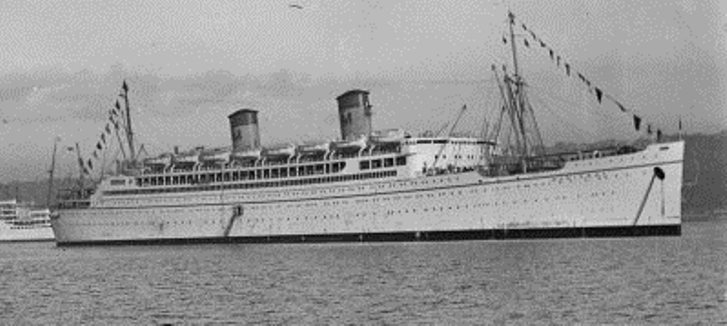
The Mariposa
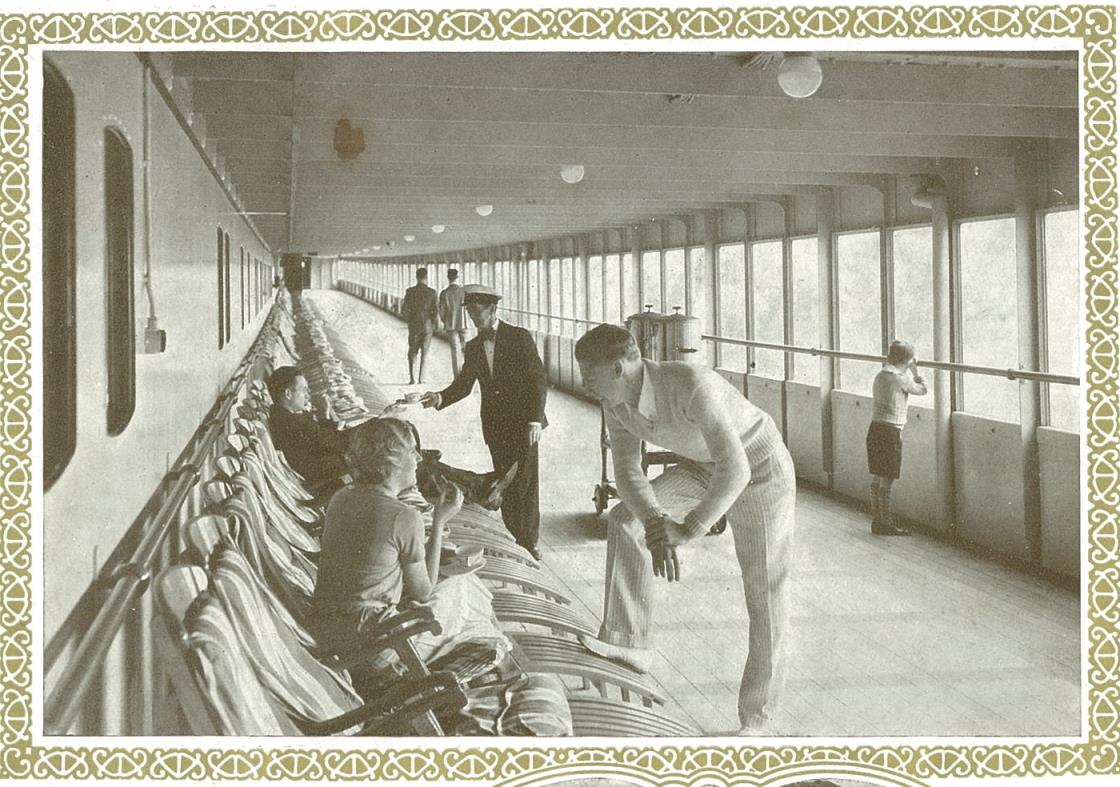
Travelling in style aboard the Mariposa
Henry Wilfrid Walker, born in England in 1869, died in Fleet-Hampshire on 17 December in 1945, aged 76 years leaving an estate valued at £11189 12s 6d. This intrepid explorer, naturalist, collector, planter, author and orchardist left behind a rich legacy for his world-wide audience of readers to appreciate and for the farmers of Flaxton to remember. The Limit today is much changed from Walker’s time but a little of that beautiful place will always hold dear the memory of the Walkers who loved it, farmed it and cherished it.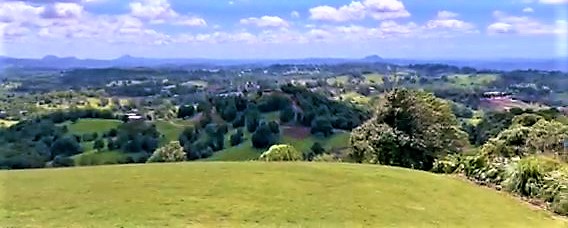
| View from The Limit over the escarpment to the sea |
REFERENCE SOURCES:
The Project Gutenberg E book version released Nov 4, 2009 of Wanderings Among South Sea Savages and in Borneo and the Philippines, By: H. Wilfrid Walker, F.R.G.S. (England) London Witherby & Co, 1909
Solidarity Philippines Australia Network
National Museum of Australia
National Archives of Australia
Australian Dictionary of Biography. Wilson, Sir Leslie Orm (1876-1955)
“A List of Members, Fellows and Associate Members,” by Royal Geographical Society of Great Britain.
Natural History Department of the British Museum
thepeerage.com
Newspapers:
Brisbane Courier: 5 Dec. 1925; 13 Sep. 1926; 2 Dec. 1929; 17 June 1933.
Courier Mail, Brisbane: 19 Jan. 1939.
Nambour Chronicle: 15 Feb. 1927; 16 May 1930; 5 Feb. 1932; 17 Nov. 1932; 10 July 1936.
Melbourne Chronicle: 19 Jan. 1923
The Queenslander: 26 Sep. 1925
The Telegraph, Brisbane: 3 Nov. 1927; 1939
Daily Examiner, Grafton: 16 Aug. 1928

 ©2016 Montville History Group. All rights reserved.
©2016 Montville History Group. All rights reserved.